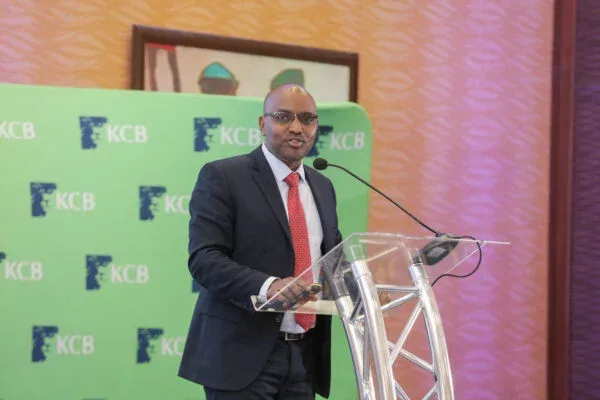KCB Group has reported a KShs. 16.5 billion net profit in Q1 2024 which is a 69% rise as compared KShs. 9.8 billion reported in a similar period last year.
The rise in profitability was on the back of a 31.6% rise in Total revenues to KShs.48.5 billion driven by both funded and non-funded lines. The non-funded income, at 36% of the total revenues, was supported by increased transaction volumes from customer confidence in our brand, adoption of the digital banking and alternative channels in making banking accessible at the convenience of our customers.
On the other hand, Total costs increased 11.3% from KShs.18.9 billion to KShs.21.0 billion largely driven by inflationary pressures that has impacted the East African market and the world in general.
The Group Total Assets grew by 22.4% to KShs. 2.0 trillion, funded by an increase in customer deposits from all segments withstanding the tough operating environment. While Customer Deposits increased by 25.4% to KShs.1.5 trillion, largely from the Kenyan market while Customer Loans rose by 12.2% to KShs.1.13 trillion from
additional advances to support our customers undertake their business activities.
The contribution by Group Businesses (excluding KCB Bank Kenya) has continued to increase closing the quarter at 17.9% in pretax profits and 13.1% in total assets, signaling the benefits of diversification to other markets outside Kenya.
Cost to Income ratio was down to 43.3% from 51.2% on the back of strong income growth coupled with stringent cost management.
The loan impairment charge was up by 53.4% from downgraded facilities. Overall, the Group’s gross non-performing book stood at KShs.205.3 billion which saw the NPL ratio close the quarter at 18.2%. This was as a result of downgrades in Kenya and the impact of translation of the foreign currency denominated book. The Group
has prioritized efforts to improve asset quality with various measures in place to reduce the ratios both in the short and long-term.
Shareholders’ funds were up 11% during the period to close at KShs. 238.6 billion from KShs.214.8 billion in the previous year. Return on Equity was up from 19.7% to 28.6%.
The Group core capital as a proportion of total risk-weighted assets stood at 15.7% against the statutory
minimum of 10.5% while the Total capital to risk-weighted assets ratio was at 17.8% against a regulatory minimum of 14.5%. All banking subsidiaries except NBK were compliant with their respective local regulatory capital requirements.
Group Chief Executive Officer Paul Russo, said “Despite a difficult operating environment across the region, we saw a strong revenue performance in the business as we entrenched prudent credit, liquidity, cost, and overall
risk management. Consumer deposits continued to grow, a show of confidence that our clients have in the brand. Our deliberate investments in digital and payments capabilities as well as regional expansion approach continued to deliver impressive results,” said KCB
He added that, “We continued to leverage Group capabilities through syndication of facilities and tapping
on centres of excellence to drive operational efficiency. Under our shared services model, we prioritized automation of key processes, roll out of more products on our self-serve channels and review of loan application processes continued to drive customer obsession and reduce friction. Looking ahead, we are upbeat about the prospects in all the markets we operate in. Moreso, we seek to leverage the strong relationships we have built and our
strong brand to drive growth in the medium term guided by our new 2024 – 2026 strategy dubbed: Transforming Today Together.”
“We are optimistic of the business prospects in the remaining part of the year, compared to last year. We have made tangible progress to sustain superior shareholder value by delivering strong financial performance while driving our agenda to build a future-proof business. Prudent deployment of our capital has ensured that we were able to remain
resilient and deliver for our stakeholders,” said KCB Group Chairman Dr. Joseph Kinyua.

